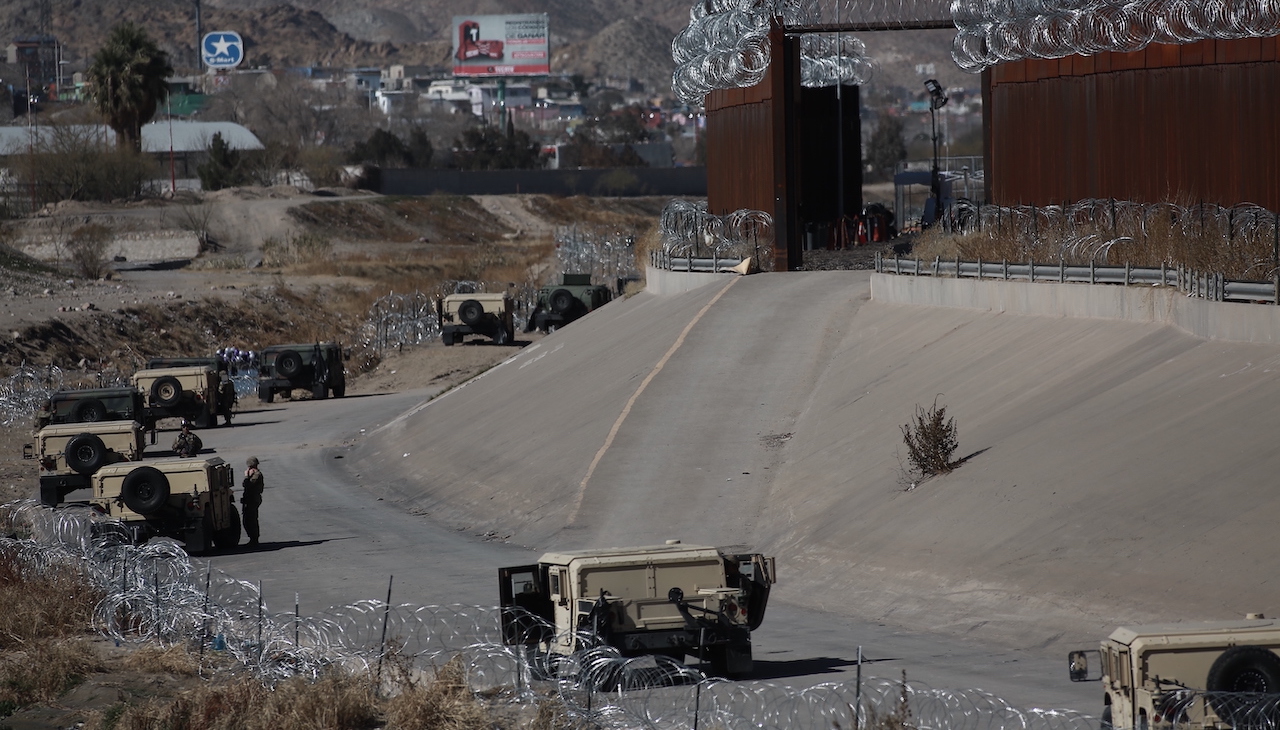
1,500 troops deployed to U.S. and Mexico border ahead of Title 42 expiration
It’s the Biden Administration’s response to the expected incoming surge of migrant crossings at the border as a result of the soon-to-expire Trump-era policy.
President Joe Biden is deploying 1,500 additional active-duty troops to the southern U.S. and Mexico border as anxiety within the White House rises regarding immigration.
The announcement made on Tuesday, May 2, comes ahead of an expected surge in migrant crossings as former President Donald Trump’s coronavirus pandemic-era restriction policy — Title 42 — is set to expire next Thursday, May 11.
The policy allowed border authorities to quickly expel certain migrants. The request was made by the Department of Homeland Security and approved by the Pentagon, which oversees the border.
U.S. officials encountered more than 191,000 migrants at the U.S.-Mexico border in March, with the Biden administration preparing for more than 10,000 migrants to enter U.S. border custody each day after Title 42 expires.
This is one of many other times the U.S. military has assisted DHS at the border by sending personnel to the area. There are roughly 2,500 National Guard troops currently at the border.
Pentagon spokesman Brig. Gen. Pat Ryder confirmed that U.S. Defense Secretary Lloyd Austin approved the deployment, and said the troops would, as they’ve done previously, will serve in administrative roles and not perform any law enforcement function.
“For 90 days, these 1,500 military personnel will fill critical capability gaps, such as ground-based detection and monitoring, data entry, and warehouse support, until CBP can address these needs through contracted support,” Ryder said.
The extra hands will free up resources at the DHS so that U.S. Customs and Border Protection can go back to working mostly in the field.
“Military personnel will not directly participate in law enforcement activities,” he added. “This deployment to the border is consistent with other forms of military support to DHS over many years.”
Biden — who promised to create an easier process for asylum seekers — has taken major political backlash as illegal crossings increased, making the political issue a vulnerable one.
Also on Tuesday, the White House announced that Mexican President Andrés Manuel López Obrador and U.S. Homeland Security Advisor Dr. Elizabeth Sherwood-Randall met in Mexico City where they ultimately agreed on a set of additional measures to “address the humanitarian situation caused by unprecedented migration flows at our shared border and in the region.”
According to White House’s statement, both countries will increase their activity to combat human smugglers and traffickers exploiting migrants — comparable to that of the 60-day surge campaign that the U.S. put together with Colombia and Panama — and Mexico will continue to take back migrants from Cuba, Haiti, Nicaragua and Venezuela past May 11 on humanitarian grounds.
This gives the Biden administration an enforcement tool to expel migrants, and makes their hazardous journey north all the more dangerous.
RELATED CONTENT
“We do expect that encounters at our southern border will increase as smugglers are seeking to take advantage of this change and already are hard at work spreading disinformation that the border will be open after that. High encounters will place a strain on our entire system, including our dedicated and heroic workforce and our communities,” said Secretary of Homeland Security, Alejandro Mayorkas on Thursday.
“Let me be clear: Our border is not open and will not be open after May 11,” he added.
The administration also recently announced, on April 27, the opening of “processing centers” in Central and South American countries in which migrants can apply to come to the U.S. legally in hopes of cutting down on illegal border crossings.
They’ll be operated by international organizations partnering with the U.S. and opened in Guatemala and Colombia in the next few weeks.
“Individuals will speak to specialists to be screened and if eligible… they’ll be referred for refugee resettlement or other lawful pathways, such as parole programs, family reunification or existing labor pathways,” a senior administration official said.
Social services or pathways to resettle in Canada, Spain or countries in their region, will also be offered.
President Biden — who recently launched his 2024 bid — faces a tougher five years ahead as another potential border crisis looms over, further making him a punching bag for many national and state Republicans.
A few Democrats have also gone against his enforcement measures, including U.S. Sen. Bob Menendez, who called Biden’s decision to deploy additional troops, “unacceptable.”
“The Biden Administration’s militarization of the border is unacceptable. There is already a humanitarian crisis in the Western Hemisphere, and deploying military personnel only signals that migrants are a threat that require our nation’s troops to contain. Nothing could be further from the truth,” Menendez said in a statement.











LEAVE A COMMENT: